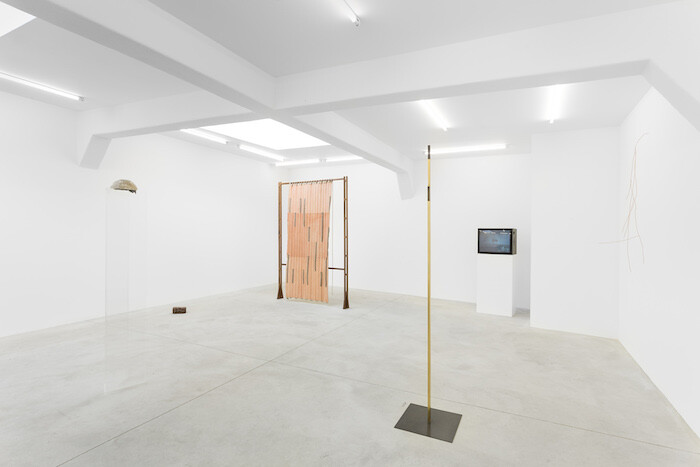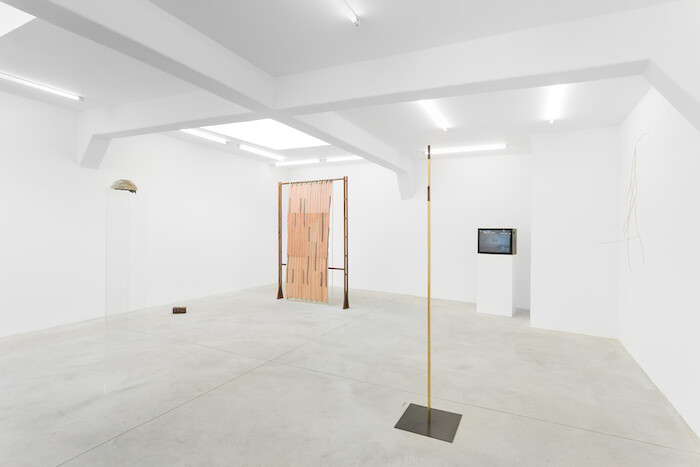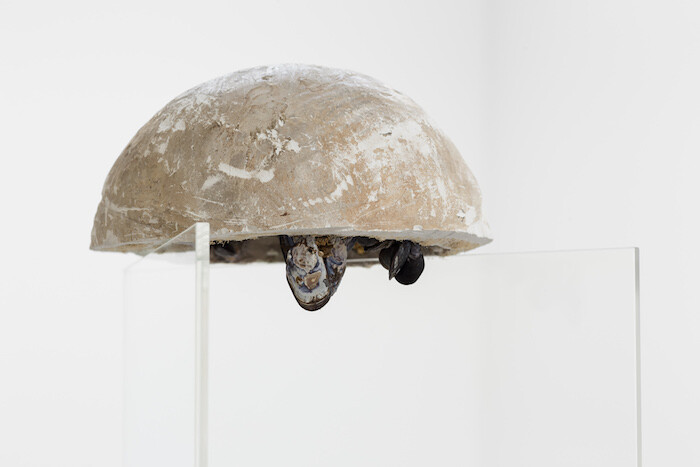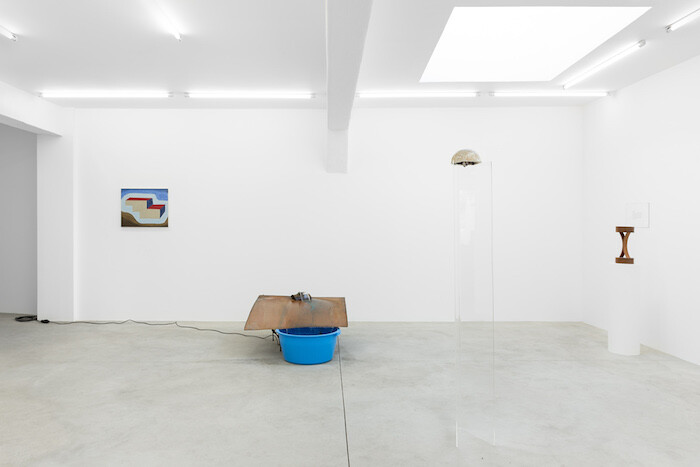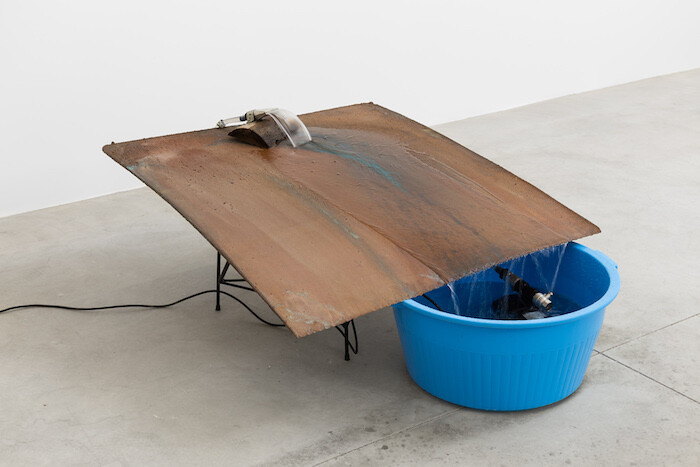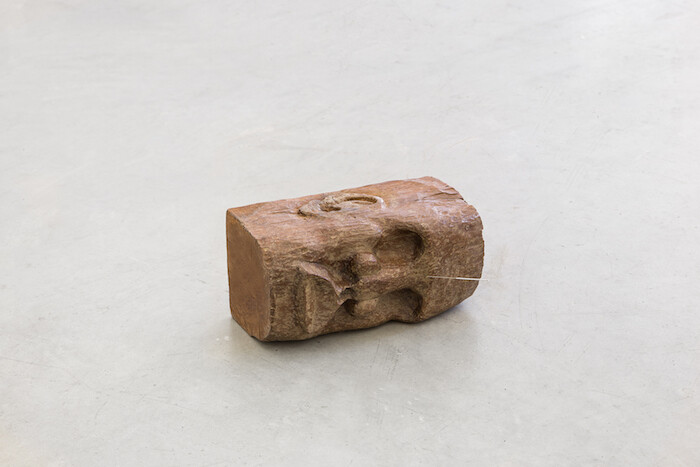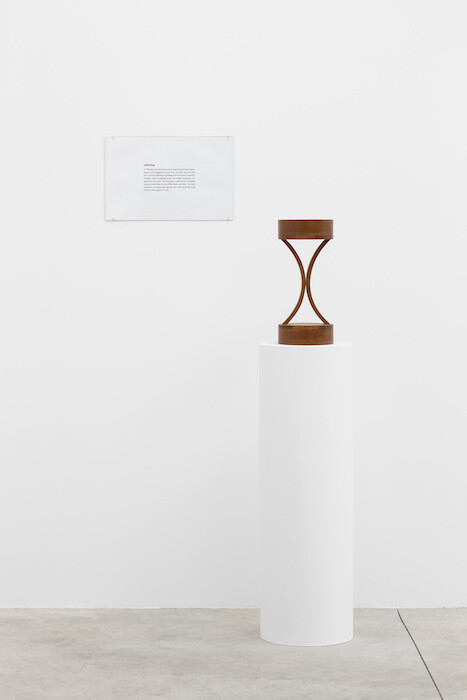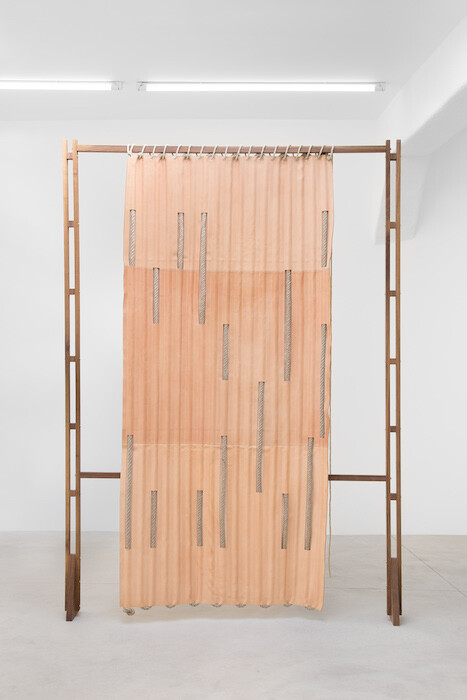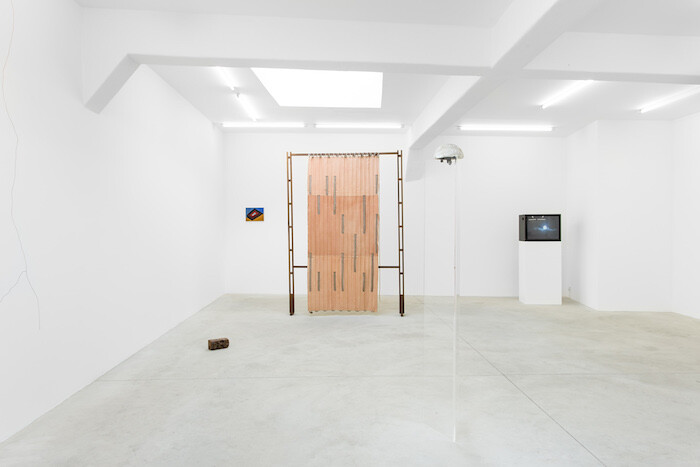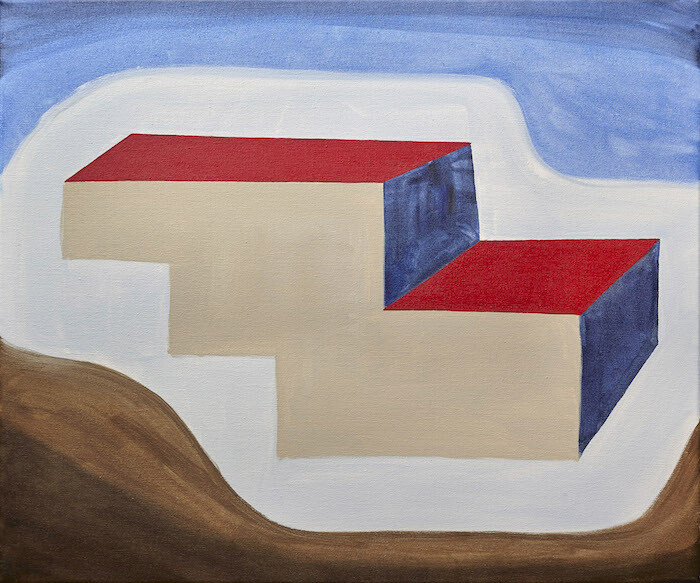When lost for words, hands are tools to point, wave, and otherwise indicate meaning. While much of this form of communication is intuitive, firsthand knowledge is highly performative: as hands trace airborne paths, their gestures form recognizable patterns that may relay receptiveness or fear, in a cognizant yet affective process of perceiving the world.
Maurice Merleau-Ponty addresses the exchange between the hand and the object it touches as a sentient and sensible one: “If I touch with my left hand my right hand while it touches an object, the right hand object is not the right hand touching: the first is an intertwining of bones, muscles, and flesh bearing down on a point in space, the second traverses space as a rocket in order to discover the exterior object in its place.”1), 92.] The result is an “ambiguous set-up”2 in which both hands alternate between touching and being touched, exceeding the logic of ambiguity: as one hand touches the other touching an object, neither the right nor the left hand nor the object can be unequivocally discerned.
“Ways of the Hand,” the inaugural exhibition of the Madrilenian gallery Maisterravalbuena in Lisbon, curated by the Lisbon-based curatorial duo João Mourão and Luís Silva, who also run the independent space Kunsthalle Lissabon, lies in this ambiguous set-up—haptic gestures that prehend form, material, and narrative. In this operational interval seven artists were invited to form a space of deflection. Erin Manning refers to the hands’ cadences in The Minor Gesture (2016) as “the gestural force that opens experience to its potential variation.”3 For Manning, the minor gesture exceeds the bounds of an event and invents its own value, which is as ephemeral as it is permeable. Permeability hence lies in the improvisational threads that make the gesture ungraspable, were it not for the prehensile hands with which humans have learned to create perceptible forms and fictions.
Active in concurrent rhythms and hesitations, hands shape covetous narratives. On entering the exhibition, André Romão’s Scalp (2017), an effectively handless 1.75-meter tall Plexiglas structure crowned with a mid-century plaster scalp, offers a diffracted view of the exhibition space, creating a translucid threshold that demarcates the process of knowing through materiality and storytelling. Dissected from a sculpture of a Portuguese clerical figure, the scalp is seemingly animated by a group of lingering shellfish, the remains of mussels and clams that call to question the cognitive processes by which a hand has anima.
In Christodoulos Panayiotou’s The Price of Copper (Fountain) (2016), a blue plastic bucket is paired with a copper cathode on which a water cycle leaves different chemical traces. Here, the container, which is commonly used in the artist’s native Cyprus and other Mediterranean countries, holds the fictions of a material that dominated the mining industry of the country, and formed the crux of Cyprus’s colonial economy. As the running water oxidizes in the cathode, its sound harmonizes the surrounding space and intersects with that of the artist’s compatriot Haris Epaminonda, whose 8 mm film Chronicles XXI (2016) is presented in a single screen and shown on a monitor. For this cut, Epaminonda shows a series of ceremonial and ritualistic statues de-signified from their intended meaning. While leitmotifs such as the sea and the sun recur—appropriate for its presentation in Lisbon—in other shots, the objecthood of the statues is carefully inspected, foregrounding a different emanation, if any, from the statues’ intended ceremonial and ritualistic nature. Also invested in the fragile status of a reverent figure is Joana Escoval’s Neither bounded nor static (2016), a found carved wooden head punctured by a acupuncturist for clear thinking. Escoval further explores notions of passage, transition, and transformation of matter in Our myth is not self evident because it is a mystery (2015), a delicate set of wall sculptures made from a forged alloy of copper and gold.
Iman Issa presents Labouring (Study for 2012) (2012) and Heritage Studies #14 (2015), two fictional accounts that depart from their own materiality—of mahogany and brass rods, respectively. Circumventing their own narrative, these ostensibly monumental presences are never self-evident or prescribed to their form or content. Rather, each sculpture is accompanied by an obscure text that invites visitors to draw a plethora of possible associations. Leonor Antunes also probes rogue monumentality with Robert (2012), a hand-sewn leather screen supported by a walnut-wood structure that interrupts visitors’ sight lines through the gallery. Robert engages vernacular traditions of craftsmanship to deconstruct the principles behind rational designs associated with modernism. On the other side of Antunes’s crafted sight lines is Magdalena Jitrik’s oil painting América III (2016). Similarly poised as a critique to the failed tropes of modernist public architecture, Jitrik’s work is roused by the slanted views Robert allows, From the same series, a second painting, América II (2016) likewise uses color as a critical tool with which to explore architectures of narration as the origin and ending of the curatorial narrative.
Maurice Merleau-Ponty, The Phenomenology of Perception (Oxford: Routledge Classics, 1962 [1945
Ibid., 93.
Erin Manning, The Minor Gesture (Durham: Duke University Press, 2016), 1.
